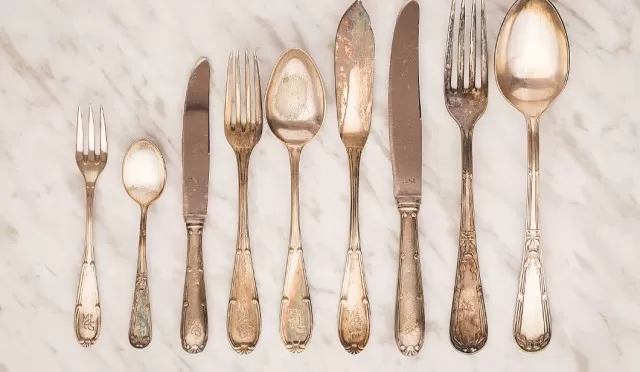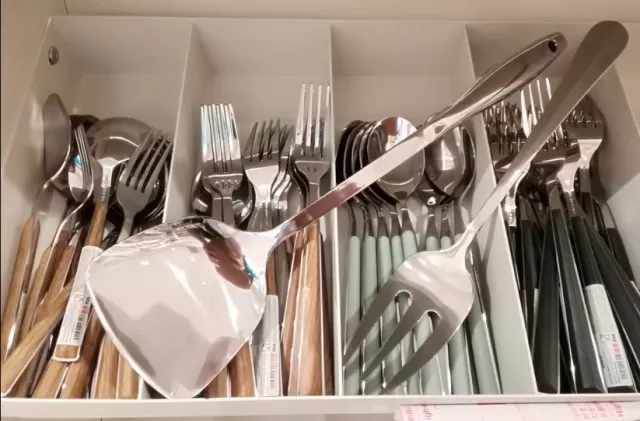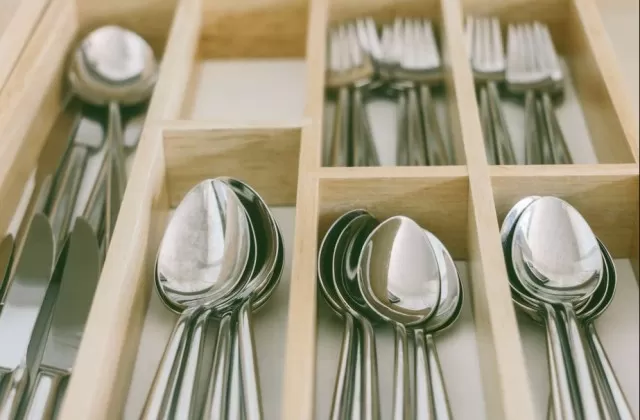Silverware is an indispensable component of any table setting, but often, when it comes to cleaning up, flatware tends to be overlooked.
Many of us simply load our forks, knives, and spoons into the dishwasher and start the cycle, assuming it will effectively clean our cutlery.
However, this approach may not be the most suitable method for ensuring the cleanliness of your silverware.
Dishwashers employ high temperatures and strong detergents to remove grease and stubborn food residues from dishes.
Unfortunately, these aggressive cleaning methods can lead to discoloration, damage the finish, or leave unsightly spots on your silverware. This is particularly true for pieces crafted from authentic sterling silver or those with special finishes.
To prevent any harm or staining, it is crucial to adopt a gentler cleaning technique.
In this guide, we will demonstrate how to clean silverware with various finishes using common household ingredients.
Additionally, we will provide advice on how to properly dry and store your silverware after cleaning. By following these simple tips, you can keep your flatware immaculate and preserve its shiny appearance for years to come.
A comprehensive guide on Cleaning and Polishing Silverware

Cleaning silverware requires careful attention to avoid damaging the finish.
Harsh scouring powders, steel wool, and stiff-bristled brushes should be avoided as they can scratch or strip away the protective coating.
It’s always recommended to refer to the manufacturer’s instructions for cleaning tips specific to your silverware’s finish before starting the cleaning process.
To prevent stubborn buildup or rust, promptly remove any food remnants and avoid prolonged soaking of the cutlery.
When cleaning silverware, including sterling silver, stainless steel, and plated pieces, it’s best to hand-wash them in warm, Soapy Water.
After cleaning, ensure to dry the silverware immediately with a soft cloth to prevent the formation of water spots.
Store your flatware in a clean, dry, and cool location, shielded from dust.
Clean Stainless-Steel Silverware

For stainless steel silverware, which is prone to streaks, water spots, and rust, follow these steps for effective cleaning:
Use a soft cloth or dish towel dampened with olive oil to gently rub away blemishes and discoloration, restoring its shine.
Lightly dampen another cloth with distilled white vinegar and buff the silverware in a circular motion to polish it. Rinse the silverware with Clean Water and dry it immediately.
In case of stubborn rust spots, create a thick paste using baking soda and water. Gently rub the paste onto the affected areas with a soft cloth, then rinse and thoroughly dry the piece.
Clean Silverware with Plated Finishes & Clean Sterling Silver Silverware

When it comes to silverware with plated finishes, such as gold, silver, matte black, or rose gold, extra care is necessary to preserve the plating:
Avoid dishwashing machines and prolonged submersion in liquid solutions.
Refrain from using acidic cleaning agents like lemon juice or citrus-scented detergents, as they can cause pitting on the plated surface. Wash the plated silverware with mild dishwashing liquid and warm water, then dry it immediately.
Sterling silver silverware tends to tarnish over time, but with proper cleaning, it can regain its original shine:
Line a pot or roasting pan with foil and fill it with boiling water.
Stir in 1/4 cup baking soda and 2 teaspoons of kosher salt. Carefully add the silverware to the cleaning solution.
Let the silverware sit in the solution for about five minutes. Once cool, remove it from the solution and thoroughly dry it.
To remove water spots, gently polish the surface with a soft cloth dampened with lemon juice. By following these steps and techniques, you can effectively clean and restore the shine of your silverware, regardless of the type of finish or material it’s made from.
*The information is for reference only.